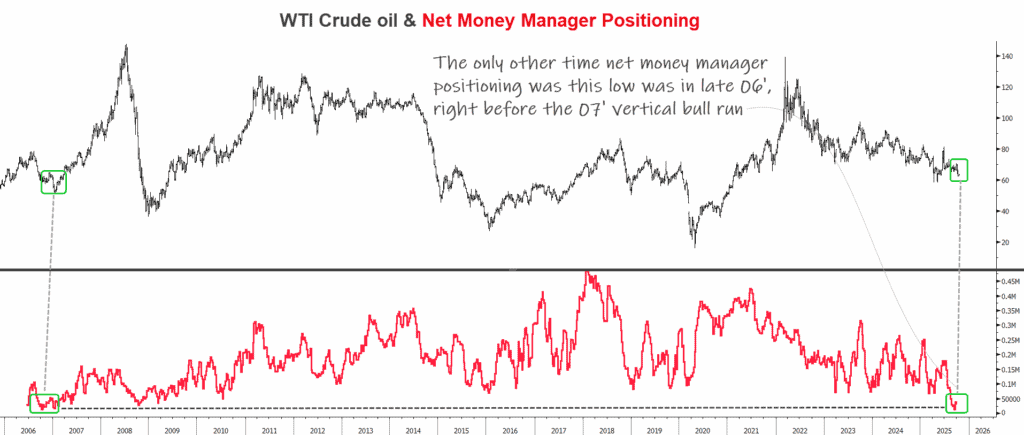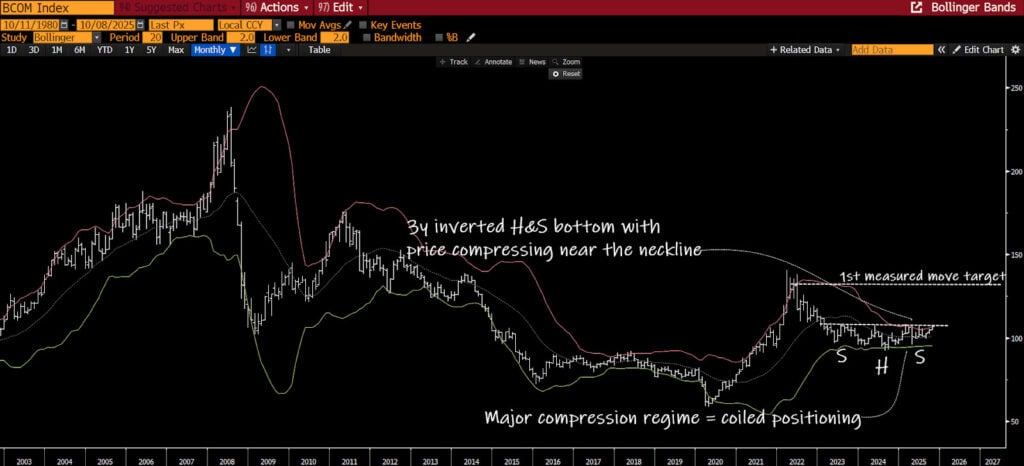To others, being wrong is a source of shame; to me, recognizing my mistakes is a source of pride. Once we realize that imperfect understanding is the human condition, there is no shame in being wrong, only in failing to correct our mistakes. ~ George Soros
I learned that everyone makes mistakes and has weaknesses and that one of the most important things that differentiates people is their approach to handling them. I learned that there is an incredible beauty to mistakes, because embedded in each mistake is a puzzle, and a gem that I could get if I solved it, i.e. a principle that I could use to reduce my mistakes in the future. ~ Ray Dalio
Alex here.
Every six months we sit down and pore over our trade logs, journal, and public writings from the previous two quarters. We review what we thought markets would do, how we placed and managed bets on these opinions, and then compare them to how reality actually unfolded.
It’s a ruthless study of our mistakes; in thinking and in execution.
Like Dalio says, “embedded in each mistake is a puzzle, and a gem”.
Pain + Reflection = Progress.
This is without a doubt the most valuable exercise we do.
Sharing this review process is unusual for a trading site. We’re one of the few services that are transparent with our performance. I know of many that tout their BS records by pulling gimmicks on a paper account, claiming nonsense 80% win rates, 350% annual returns, etc…
We’re traders first and foremost. And as traders, all we have is our risk-adjusted P/L.
One of our principles when starting MO was to be completely forthright… to bare our warts and all (sometimes I feel like a leper). At the end of the day, like you, we just want to become better at the game of markets. Being fully transparent helps us do that.
The Palindrome (George Soros), one of the best to have played the game, had a win rate in the mid-30s. That means on average every 2 out of 3 trades he made were losers. Yet, the guy was a perpetual money machine over three decades. He knew how to lose and still win. Being good at being wrong is one of the most important skills a trader can develop.
One of my favorite market technicians, Ned Davis, put it like this.
We are in the business of making mistakes. The only difference between the winners and the losers is that the winners make small mistakes, while the losers make big mistakes.
Our job as speculators is to learn to make smaller and smaller mistakes by mercilessly studying our big ones. This is how we continuously refine our process in a way that increases the positive asymmetry of our trading approach over time.
This is akin to Josh Waitzkin’s concept of “making smaller and smaller circles”.
He notes.
It’s rarely a mysterious technique that drives us to the top, but rather a profound mastery of what may well be a basic skill set.
I’ve spent years dissecting the habits and practices of the greatest traders. And I can tell you that there’s no secret to anything they do.
They are just incredibly efficient at executing the basics:
- Cutting losses short and protecting capital
- Knowing when to sit on hands and letting winners run
- Mental flexibility, strong opinions weakly held, respecting price as the final arbiter of truth
Now let’s look at our numbers for the past 6-months and see where we can make smaller circles.
Performance
 Macro Ops Portfolio
Macro Ops Portfolio
- Return Metrics *Through June 7th, 2019
- YTD: 11.7%
- Inception (Jan 1st, 2016): 43.7%
- Annual Vol: 13.18%
- Sharpe Ratio: 0.83
- Max DD from NAV ATH: -17.5%
These are so-so returns and to be honest I’m not happy with them. Here’s where I screwed up.
Successful trading and investing can be boiled down to how well one does just two things:
- Analysis
- Trade management
Everybody focuses on analysis and trying to “pick winners” but it’s the latter, trade management, where the REAL money is made.
If you have good trade management you can get most of your analysis wrong and still make money. If you have good analysis but fudge your trade management then it’s a total crapshoot whether you come out on top and over the long-haul, you’ll almost certainly end up poorer than when you started.
A good example of this is an on-going experiment that one of our Collective members is running and which he’s been sharing in our internal group. He’s built a random trading system that picks entries in a wide number of assets completely by random (hence the name). The only part of the system that isn’t randomized is the position sizing and exits.
This system has been crushing it since inception.
For the last six months (well, 9 months really) our analysis has been on point but our trade management has been meh… We’ve called nearly every major turning point in a number of markets such as buying bonds at the start of November, going long stocks at the end of December, staying long stocks until the end of April, and then issuing a sell signal at the end of April calling for an extended decline before issuing a buy call last week.
But all of that is only good for 11+% year-to-date because of mediocre trade management. I only hope that our Collective members have profited from our analysis better than we have.
So what does this mean? What can we pull from this?
Well, first we have to make sure that we’re not falling into the trap of what poker players call resulting. This is where you assign meaning to statistical noise (aka randomness). It’s dangerous to make broad assumptions about skill and strategy based off of a few hands instead of many cycles at the table. So it is for traders and investors, where perfectly effective strategies can hit bad streaks that last weeks, months, and sometimes years.
Determining what time frame is appropriate for teasing out signal depends on one’s strategy, trade frequency, and a host of other variables. And even then, we never truly know what’s due to skill or luck — or bad luck.
That’s why we have to rely on logic and a certain amount of faith until we can compile enough data — experience enough cycles — to be able to pull valuable lessons from our results.
This brings us to an important point. And that’s that as a speculator, you will spend the vast majority of your time in a drawdown from NAV highs. This is a reality of all trading strategies that look to exploit convex opportunities.
The returns for these strategies are inherently bunchy. They follow natural power laws, like Pareto’s 80/20 distribution — or really it’s closer to 90/10 in markets.
This means we should expect 90% of our profits to come from 10% or fewer of our trades, with the rest canceling each other out. We can’t know beforehand when these bottom-line trades will come. We have to accept the fact that we’ll spend most of our time grinding away, taking strikes, hitting singles, and fouling out until we catch a fat pitch.
I’m confident that we’re not resulting and that our trade management was just crappy.
I’ve spent the last few weeks really thinking about this and searching for areas where I can improve my process. There are a number of obvious reasons why I’ve been less on the gun this year: I recently moved cross country, have been having to travel a lot internationally for work, am just finishing up going through a divorce, and experienced some health issues earlier in the year.
These things took up mind-space. They pulled me away from the screens for extended periods of time. They’re obvious performance detractors.
A good thing going forward is that my health is now better, I don’t plan on getting divorced again anytime soon :p, and I’ve purposefully reduced my traveling schedule so I can buckle down and manage our book more effectively.
After analyzing my trade management errors over the last 6-months I’ve concluded that my failures can be bucketed into the following:
- Being slow on the trigger leading to too much slippage and poor entries
- Being too loose with profit management in a volatile macro regime (ie, failing to take chips off the table once our stack has grown large)
- Just flat out not following up on our own calls (a symptom of being busy or away from screens).
We were up over 23% on the year in April but we ended up giving a handful of our profits back because I failed to fully carry out our call to significantly reduce risk + we’re holding a sizable amount of DOTM positions which naturally experience wild swings.
These are all easy fixes of better managing my schedule and getting personal things in order. I know for a fact that this area isn’t going to be a detractor of performance going into the rest of the year.
The more challenging problems are going to be improving our quantified rules and processes for managing trades, such as when and how to take profits. There’s a lot of room for improvement in this space and that has me really excited. I’ve been spending a good of time over the last few months working on this problem and I’ve had a number of a-ha! moments. We’ll be codifying these into our process in the coming weeks and writing up a long report laying out the changes and sharing this with Collective members. I’m excited…







